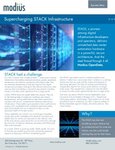As a global society, the climate emergency we find ourselves in should prompt us to take action in the best ways we can.
Businesses in particular have a great responsibility placed on them because their actions can have a big impact. The UN’s Intergovernmental Panel on Climate Change (IPCC) emphasised the importance of both businesses and governments to act immediately in its Climate Change 2022 report. But this isn’t a battle with no weapons. We have so many technical innovations, expertise and best practice at our disposal. We just need to commit to sharing information with each other and beginning to take action sooner, rather than later. “Why put off until tomorrow what you can do today?” the saying goes.
Let’s look at the IT sector as an example I know well. One area in particular with a large amount of potential to make sustainability improvements is the data center. Data centers and data transmission networks consume over two percent of global electricity, according to IEA. Although the industry has already taken strides to reduce the carbon emissions of data centers, we also have to bear in mind the growth of internet usage globally, which is putting a greater strain on data centers all the time. Based on the conversations I’m having with customers and others in the industry, here are a few things to think about when it comes to decarbonizing the data center:
Begin with the apps
Application modernization is a good place to start because this alone can provide a 50 percent power saving of server capacity. It reduces operating system overhead and the size of the overall infrastructure footprint. Savings can increase even more by switching off access to application data when it is not required, and offloading cold and unused data to a data lake, optimizing the enterprise data warehouse. Add to this the value that app modernization brings to data operations. It helps break down data silos so that information can flow freely throughout an organization. This in turn helps businesses use the insights they now have access to, in order to automate daily tasks. All of this contributes to having a more efficient organization both from a workload and energy perspective.
Measure all emissions – not just some
It’s also important to consider the energy efficiency of the infrastructure and think about what impact this can have across the entire value chain. Digital systems providers can play a key role here. Let’s take storage systems as an example. A lot of attention is usually given to the carbon emissions of the storage product during its manufacture, but what about emissions related to afterwards? More than 80 percent of the value chain carbon emissions of a storage product are related to its use after it’s sold. That means we can’t focus our efforts solely on energy usage during production, we have to monitor every stage from cradle to grave.
Manage data differently
A smarter approach to data management enables businesses to get more from their existing storage solutions and bring down the energy consumption at the same time. For example, using enhanced data compression technology, companies can store more user data using the capacity they’ve already purchased. Storage virtualization can apply this technology to existing storage systems and reduce energy consumption and carbon emissions.
Another approach to think about is the non-disruptive replacement of the storage controller to next generation systems. The key phrase here is ‘non-disruptive’. It avoids the need for data migration which can be complicated because of the need to run both old and new systems at the same time during the migration. Not only is data migration complex, it also requires more power, more floorspace, and more time to complete, which isn’t what you want when you’re trying to reduce energy usage.
Hitachi recently worked on a data center assessment where we found a customer’s storage NVMe flash configuration created 2.5 times more carbon than an SSD with SAS interface solution. Being aware of the carbon outputs of existing and potential storage solutions is important, as well as having the right guidance to make the switch. If the end result is a solution that performs better with reduced toll on the environment, it’s a win.
Leading with insights
Data insight is an important part of the journey towards decarbonization. Many companies have the adequate information they need to inform a smooth transition to a less carbon intensive data center. They problem is the data is often hiding in too many places across the business and isn’t used in the way it should be. Best practice is to have a central portal that gives an overview of past, current, and future energy consumption, taking into account electricity, CO2 emission, carbon footprint, and potential cost savings. When all this information lives in one place, it removes a lot of the guesswork that makes decarbonization puzzling and stressful.
The journey to becoming a carbon-neutral data center is achievable with the technology and insights available today. What’s more, doing so can be a cost-effective exercise that also allows a company to make progress in achieving sustainability goals.





